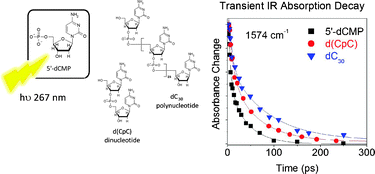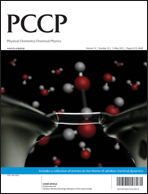Ultrafast IR spectroscopy of polymeric cytosine nucleic acids reveal the long-lived species is due to a localised state†
Abstract
The decay pathways of UV-excited

- This article is part of the themed collection: Ultrafast chemical dynamics

 Please wait while we load your content...
Please wait while we load your content...